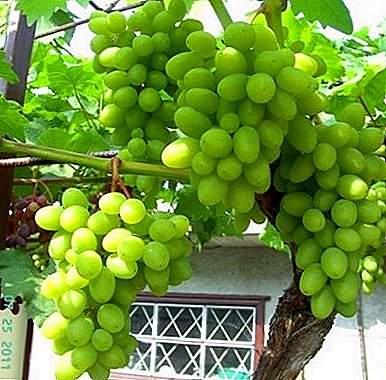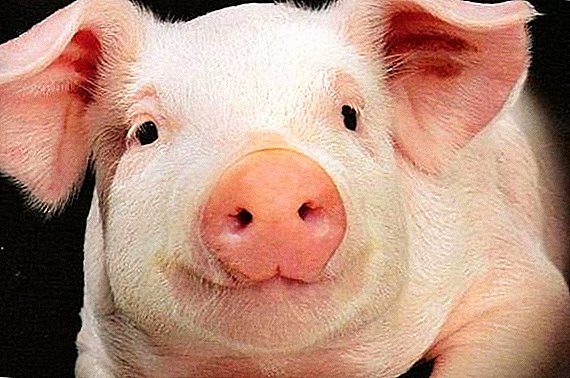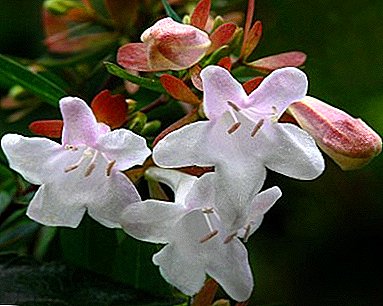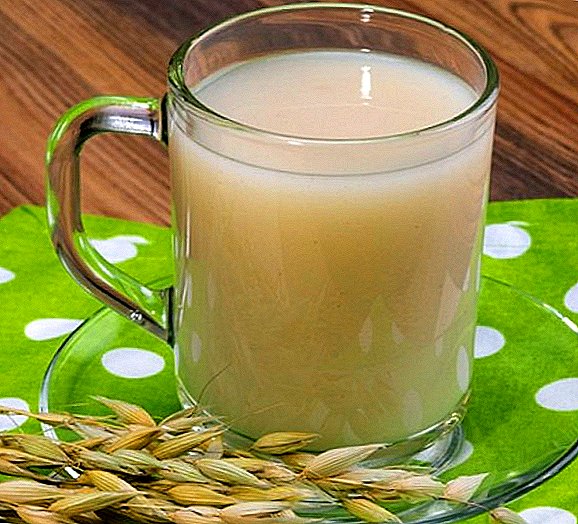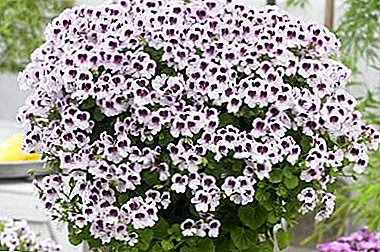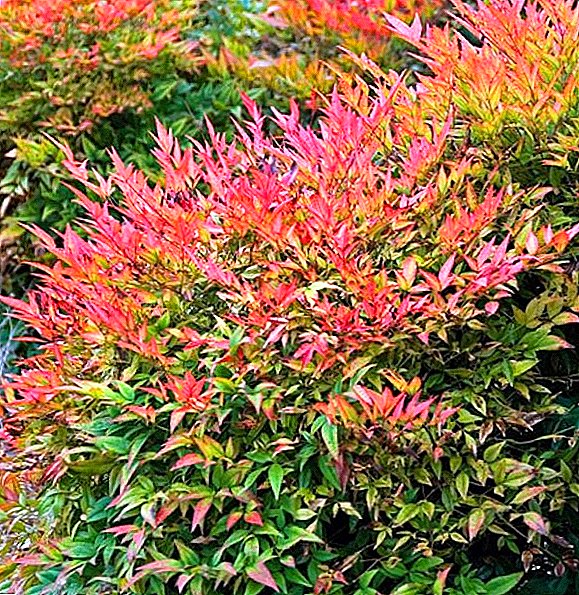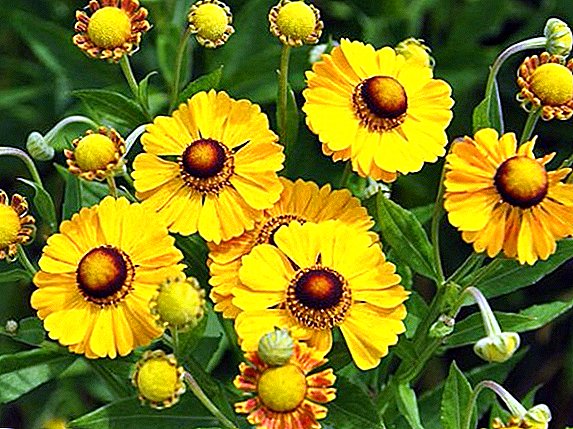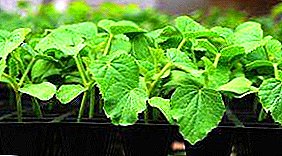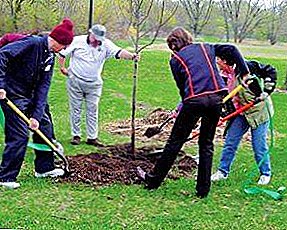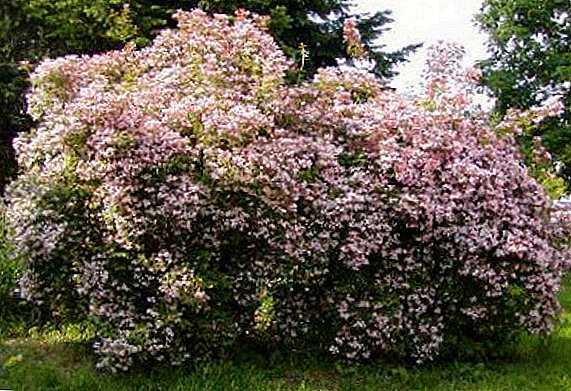 Kolkvitsiya rarely found in our gardens, although it is unpretentious in the care and easily decorate any area. In this article we will talk about the types of this shrub, as well as about the proper care of it in order to grow a lot of flowers, and its beautiful flowering is pleasing to the eye.
Kolkvitsiya rarely found in our gardens, although it is unpretentious in the care and easily decorate any area. In this article we will talk about the types of this shrub, as well as about the proper care of it in order to grow a lot of flowers, and its beautiful flowering is pleasing to the eye.
Botanical description
This plant is a perennial shrub in height from 1.5 to 3 meters. A small plant is covered with small hairs. In adult shrubs, hairs are absent, it is covered with red-brown bark, exfoliated by plates.  In spring, green leaves appear on the collar, leaves that are sharp to the edge, are up to 7 cm long, in the fall they turn yellow, and fall to the winter.
In spring, green leaves appear on the collar, leaves that are sharp to the edge, are up to 7 cm long, in the fall they turn yellow, and fall to the winter.
The bush grows with several trunks, annually there are abundant basal shoots. First, the shoots grow straight, then they curve in an arc, leaning toward the ground.
Flowering occurs in the second year of planting in the ground in mid-summer. The buds of the collar are paired and are located at the ends of the branches, the flowers are pinkish-white in color with a pearl luster.
Among flowering shrubs also look beautiful: Manchurian Aralia, magnolia, forsythia, lilac, Japanese spirea, rhododendron, hibiscus, heather and abelia.
The fruits are rounded boxes covered with bristles, they ripen in late autumn.  Fruits of Collect
Fruits of Collect
Varieties and types
In culture, this shrub is represented in a single form of Kolkwitzia amabilis - the colkwitz is adorable. The translation of the specific name has many variations, among which are “dear”, “pleasant”, “dear to the heart”.
There are two varieties of this shrub:
- "Rosea" - with flowers of deep dark pink color;

- "Pink Cloud" - with creamy pink flowers.

Plant Care
Kolkvitsiya unpretentious, care for her is easy, but some features of the cultivation still need to be considered.
Lighting
For plants preferred well-lit sunny places and penumbra.
Important! When planting flowers in shaded places, the plant will not be able to bloom abundantly, there is a direct connection between the sun's rays received by the plant and the number of flowers on it.
Temperature
This unpretentious shrub tolerates well the temperature from negative values to + 30 ... +35 ° C.
The soil
Kolkvitsiya charming undemanding to the composition and physical characteristics of the soil, preferred for her fertile moderately moist soil. The site must be protected from strong winds.
Landing is carried out in the spring when the soil warms up. The depth and diameter of the pit for planting should be 50 centimeters, it must be filled with a mixture, which includes sand and humus.  For group planting, the distance between plants should be up to 1.5 meters.
For group planting, the distance between plants should be up to 1.5 meters.
Watering
It is necessary to water the plant as the soil dries near the tree circle. Watering is carried out in the evening with separated or rain water at room temperature.
Humidity
Drying the soil is undesirable for the plant, so it should be slightly damp. Humidity is desirable average, about 50-55%, but even significant fluctuations of this indicator the plant tolerates with ease.
Top dressing
Feed the ring twice a season. In the spring - infusion of mullein (1 part mullein per 10 parts of water). In June - with a solution of double superphosphate (30-50 g per liter of water, the norm is one bucket per bush).
Pruning
In the spring you need to carry out sanitary pruning to remove the frozen and damaged branches. Formative pruning should be done after ottsvetaniya to crown acquired aesthetic shape.  In the summer, abundant root shoots are removed, and at the end of autumn it is necessary to cut off unripe shoots that cannot survive the winter.
In the summer, abundant root shoots are removed, and at the end of autumn it is necessary to cut off unripe shoots that cannot survive the winter.
Wintering
This plant tolerates frost well to -30 ° C. The main factor for successful wintering of the plant is a favorable location, the site should not be blown by the wind.
Did you know? Kolkvitsiya was named after the German botanist Richard Kolkvitsa.
For easier transfer of winter by the plant in the first years, the following techniques will be useful:
- bush need to bend to the ground and overlaid with lapnikom. Later it is necessary to cover the ring with snow. In the spring when warming bushes straighten;
- in order to protect the plant from extreme cold, the crowns are wrapped with kraft paper or any covering material. In the spring the shelter is removed.
Breeding
Reproduction of the beautiful collar is done by seeds, cuttings, layering and dividing the bush. We will tell about each method in more detail.
Seeds
Seed propagation is a long process. First, the seeds are stratified in wet sand in a cold place for up to two months. Sowing must be done in April, this will require a long container.  Seeds of the beautiful seed Koltsvitsii need to be deepened to 5 mm in a special soil from a mixture of garden soil, sand and peat. Then you need to water the seeds with water, cover with foil and leave in a heated room.
Seeds of the beautiful seed Koltsvitsii need to be deepened to 5 mm in a special soil from a mixture of garden soil, sand and peat. Then you need to water the seeds with water, cover with foil and leave in a heated room.
Shoots are observed already in 3-4 weeks after sowing, and strong shoots up to 25 cm in height - in 4-4.5 months.
Important! When breeding seeds, flowering can be observed 5 years after planting in open ground.
In the tank, young sprouts stay until the next spring and land in the open soil after the pick.
Cuttings
To implement this method, in June it is necessary to cut off the branches with at least two knees and soak them in a solution of indolylbutyric acid for 14 hours (50 g of acid are needed for 1 liter of water).
Then the cuttings are planted in a greenhouse or greenhouse, where they take root until the next spring. On the open soil cuttings must be planted with a clod of earth. Flowering will occur in 1-2 years after such a transplant.
Layering
To reproduce the shrub with this method, you need to select a young branch, incise its bark and smear it with a root system growth stimulator. Then make a hole in the ground, bend the branch down and sprinkle it with earth.
In the summer, the soil in this place must be kept wet.
Soon young shoots will appear from this fossa. However, there is no need to hurry with replanting a bush, it should remain intact until next May.  After this period, the subsidiary bush is carefully separated from the parent one and transferred to a new location.
After this period, the subsidiary bush is carefully separated from the parent one and transferred to a new location.
Dividing bush
This method is good to apply, replanting the ring. Digging a bush, you need to remove dry and rotten roots. Further, it is divided into several parts with good roots and stems.
Sections are treated with crushed coal and then parts of the divided bush are planted in the ground in the usual manner. 
Application
Kolkvitsiya used in landscape design to create mixed flower beds and other elements. Effective flowering helps it to be located in the center of landscape compositions.
Especially good this shrub looks on well-groomed lawns and against the background of a red brick wall.
Did you know? In Crimea, the beautiful Kolkvitsiya has been cultivated in the Nikitsky Botanical Garden since 1940. It was imported by seeds from the Brooklyn Botanical Garden.
Often kolkvitsiyu planted with peonies and irises, which look good against the background of a flowering plant. Together with weigela and action, it can become a beautiful hedge along the plot.
Difficulties in growing
Possible difficulties that may be faced by the grower when growing stock:
- weak flowering or lack thereof. The reasons for this may be too dark a place on the plot, poor soil or the lack of competent feeding. In this case, it is necessary to analyze all the factors and transplant the plant or make feeding;
- death of young shoots. This may be caused by severe frosts. To avoid this problem, it is necessary to mulch the bush for the winter;
- root decay. To avoid this, it is necessary not to allow the collar to be located in the valley.

Diseases and pests
Kolkvitsiya charming is not very susceptible to diseases and attacks of pests, they are observed only with improper care and adverse weather conditions.
Among the main diseases of the plant are:
- root rot. It is formed with excess water in the roots. With the disease, the roots of the plant begin to rot and turn black. To combat this disease, it is necessary to remove the rotten parts and treat the plant with a fungicide.
- viral diseases. The main manifestation of these diseases - "mosaic" and spots on the leaves. Since viral diseases do not respond to treatment, the bush must be excavated and burned to protect other plants.
Properly selected shrubs for the garden will please the eye and decorate it from spring to late autumn. Check out: a catalog of flowering shrubs for the garden, ornamental shrubs with white flowers, berry shrubs, conifers and evergreen shrubs.
Among the pests in colccus can be observed:
- honeysuckle aphid. These pests suck the juice from the leaves and shoots, as a result of which the leaves twist and fall, and the shoots stop growing. The bush is sprayed with "Aktellik" and "Konfidor", strictly observing the rules of application;
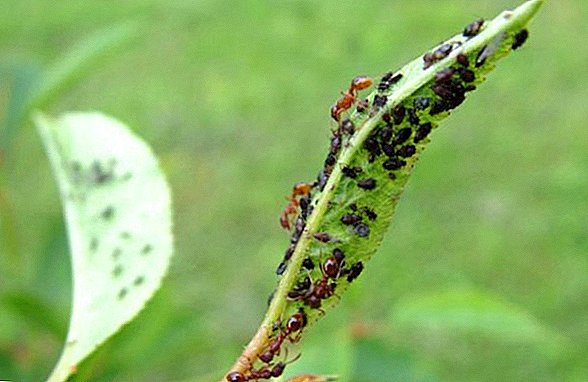
- scythe. They stick to the bark and feed on the sap of the plant; weakened plants may die. An effective way to get rid of them will be a double spraying in mid-summer "Rogor" and "Aktellik", with a break of 2 weeks;
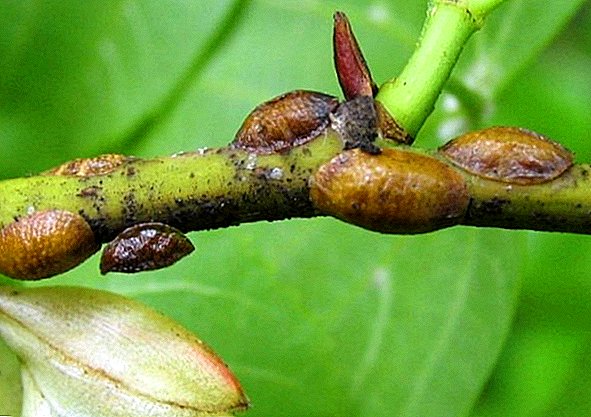
- leaf-eating caterpillars. They gnaw the leaves of the collar, thus violating its aesthetic appearance. To combat these pests will help decoction of the tops of tomatoes. To do this, 1 kg of fresh or dry tops must be poured with 3 liters of water and boil for 40 minutes. This broth must be diluted in a bucket of water and spray the ring.

Due to its undemandingness and beauty, this charming collar is valued by both landscape designers and gardeners. Knowing all the subtleties of care for a pretty ring, you can easily grow it in your own area, and the aesthetic pleasure of observing its flowering will be guaranteed.







